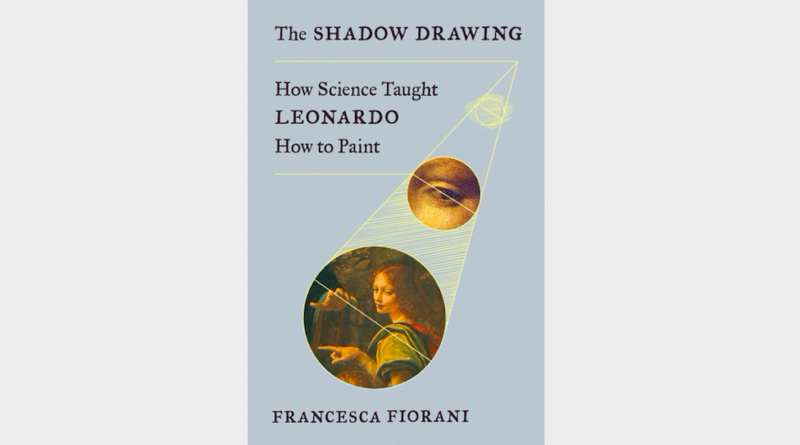REVIEW: ‘The Shadow Drawing: How Science Taught Leonardo How to Paint’ by Francesca Fiorani
Image courtesy of Farrar, Straus and Giroux / Provided by official site.
Francesca Fiorani’s excellent new book, The Shadow Drawing: How Science Taught Leonardo How to Paint, takes a deep dive into the history, life and interpretation of Leonardo da Vinci’s remarkable career as a Renaissance painter who was interested in and engaged with scientific concepts, including optics. Fiorani’s highly readable and accessible account tries to make the case that Leonardo did not have two distinct phases to his career — art followed by science — as some categorize his legacy. Instead, she succeeds in defining the artist’s entire life as one in which he was enamored of scientific concepts and was likely influenced by foundational books and theories, including Alhacen’s Book of Optics.
With her central theme woven throughout these 300-plus pages, Fiorani takes the reader on a journey throughout Leonardo’s artistic output. There are chapters on each and every one of his masterpieces, plus much ink on the smaller pieces and lost examples. Although interest may be highest in the “Mona Lisa” and “The Last Supper,” there are actually an equal number of wonders to be found in the author’s dissection of “Adoration of the Magi,” “Annunciation” and “Virgin and Child with St. Anne.”
When Fiorani cannot make a definitive connection between the scientific inquiry of the day and Leonardo’s work, she keeps the academic research honest and decides to describe the surroundings and offer clues of interpretation. That means there are many passages about Leonardo’s chief educator, Andrea del Verrocchio, and what life was like working in a studio with other artists. There are also explanations of Renaissance Florence and the motivations that drove the painter to Milan, Rome and eventually France. The final quarter of the book deals with the convoluted journey Leonardo’s book on painting took to publication following his death.
The Medici family plays an important role, to be expected, but it’s also quite fascinating to see how Leonardo bucked some of the trends of the day and decided to paint not for the fame, money or patronage opportunities. Instead, he was focused on art for his own interests, and his ultimate goal was to depict the inner souls of his subjects and have these representations connect with the inner souls of the viewers. And these representations needed to be scientifically accurate.
To achieve his lofty goals, Leonardo spent many years on each of his paintings, which means his output was not as prolific as his contemporaries. Also, there is a fair number of unfinished works in his oeuvre, including the “Mona Lisa.” What took so long was his obsession and careful consideration of light and shadow. He was interested in making sure that his paintings were scientifically sound in how they portrayed the foreground versus the background, the light from the sun versus the light from a candle, and how color is an integral part of light and shadow.
Fiorani’s thesis never becomes too complicated, and one need not be a Renaissance expert to understand the assertions she defends. This could serve as a helpful text in a college art history course, but it’s also a comprehensive and enticing portrait for those readers who love a good biography and how a person’s life fits into a larger historical context.
By John Soltes / Publisher / John@HollywoodSoapbox.com
The Shadow Drawing: How Science Taught Leonardo How to Paint by Francesca Fiorani. 384 pages. Farrar, Straus and Giroux. $35. Click here for more information.

